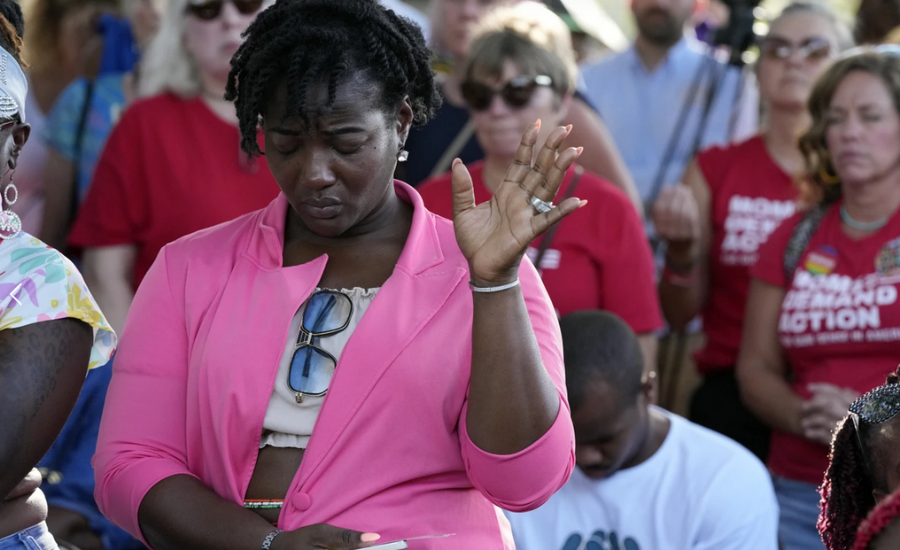Jacksonville killings refocus attention on the city’s racist past and the struggle to move on
By Associated Press // Racism // EEW Magazine Online
A woman attends vigil for victims of a racially motivated shooting in Jacksonville, FL (Credit. AP)
By some measures, the city was making strides to emerge from its racist past. But the killing of three Black people Saturday by a young, white shooter was a painful and startling reminder that the remnants of racism continue to fester in Jacksonville, Florida.
What happened in Jacksonville, said longtime resident Rodney Hurst, 79, “could have happened anywhere, except it did happen in Jacksonville.”
A photograph of the shooter Ryan Christopher Palmeter is shown on a video monitor during a press conference (Credit: AP)
The shooting occurred as the Jacksonville community prepared for an annual commemoration of what is known as Ax Handle Saturday. In an unforgettable exhibition of brutality 63 years ago, a mob of white people used baseball bats and ax handles to club peaceful Black demonstrators protesting segregation at a downtown lunch counter on Aug. 27, 1960. Police first stood by but joined the white mob when the Black group began fighting back. Instead of collaring any white instigators, police arrested several Black people.
Hurst, who was 16 when the historic violence erupted, has been encouraged by progress following the Civil Rights movement, but worries racism once again has become normalized by the nation’s divisive politics.
Even so, he said, “Jacksonville did not need anybody to help its racism along.”
Parishioners pray at a service held for the victims at the St. Paul A.M.E. church (Credit: AP)
Jacksonville Sheriff T.K. Waters said notes left by the 21-year-old shooter, Ryan Palmeter, made it clear he was targeting Black residents of a predominantly African American neighborhood in Jacksonville.
Palmeter used an AR-15 semi-automatic rifle and a Glock handgun to kill his victims, Waters said, both weapons bought legally earlier this year despite his involuntary commitment for a 72-hour mental health examination in 2017.
He fatally shot Angela Michelle Carr, 52, as she sat in her car and chased A.J. Laguerre, 19, through a Dollar General store before shooting him. The third victim, Jerrald Gallion, 29, was killed as he entered the store.
Then the shooter killed himself.
Palmeter sent statements to federal law enforcement and the media suggesting his attack marked the fifth anniversary of a shooting at a video game tournament in Jacksonville that killed two people. That assailant also killed himself.
Somewhat puzzling is the apparent lack of a racial motive in the shooting five years ago, leaving questions about why Palmeter cited the attack in his writings.
Jacksonville is home to nearly 1 million people, about a third of them Black, just south of Florida’s border with Georgia. Jacksonville elected its first Black mayor in 2011. A couple years later, there was another watershed moment when a coalition of activists succeeded in persuading the school board, after years of failed attempts, to rename a high school honoring Nathan Bedford Forrest, a Confederate general and the first grand wizard of the Ku Klux Klan.
Since then, the city has continued to sever ties to the racist past by removing a Confederate soldier statue atop a memorial in a park bordering City Hall. The excision was finalized by Jacksonville’s former mayor, a Republican who once served as his party’s statewide chair.



